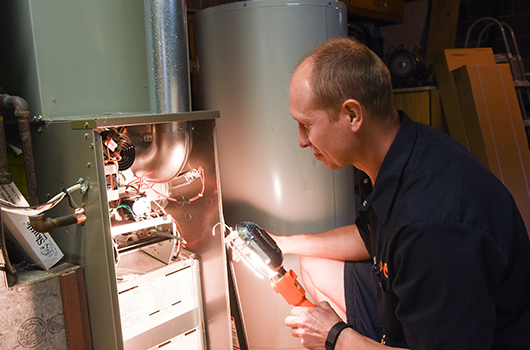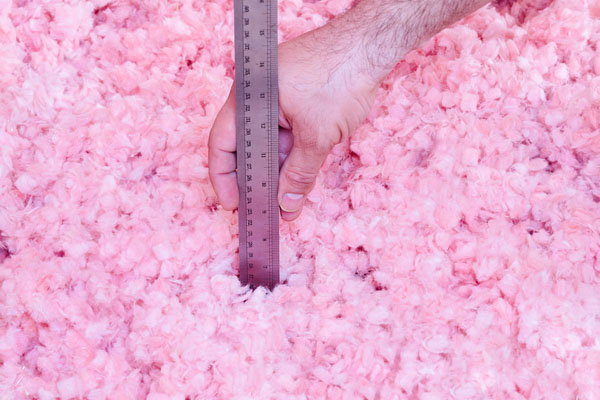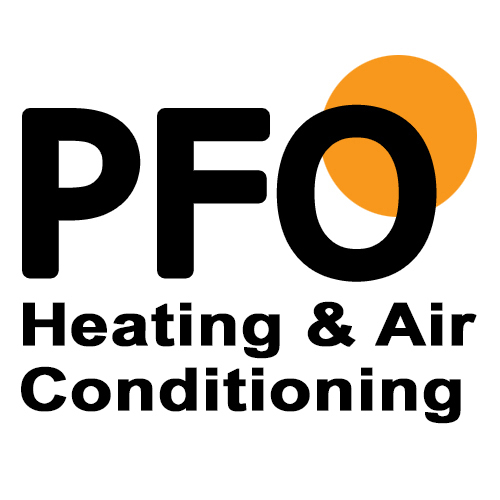
We all admire the strength of massive furnaces, yet they might not always be the perfect fit. Sometimes, the most robust units can underperform in spaces they’re not tailored for. It’s essential to prioritize the specific needs of your home over merely choosing the biggest size. Determining the right furnace requires careful thought and expertise. That’s where PFO Heating & Air Conditioning steps in, providing expert consultation and scientific evaluations to ensure you have a furnace that’s just right. Dive into this article to understand the significance of correct furnace sizing.
Why Does Proper Furnace Sizing Matter?
Contents
Many homeowners often make the mistake of selecting furnaces based on dubious criteria. Without expert guidance, it’s easy to either overestimate or underestimate the appropriate size, leading to undesired consequences due to this oversight. The further the selected furnace is from the optimal size, the more pronounced the adverse effects become. An incorrectly sized furnace can introduce both physical discomfort and financial strain. Even minor discrepancies can lead to noticeable discomfort.
At PFO Heating & Air Conditioning, we emphasize the importance of making the right choice from the outset, ensuring years of hassle-free usage. Continue reading to delve deeper into the implications of misjudged furnace sizing and valuable insights on selecting the perfect furnace for your residence.
The Implications of Choosing the Wrong Furnace Size for Your Home
Comfort Issues

When a furnace is too small for your home, it simply can’t generate enough heat to maintain a comfortable environment, especially during the harshest winter days. Imagine your heating system working at its maximum capacity, yet you find yourself constantly bundling up in thick sweaters and blankets. It might run incessantly, failing to reach the set temperature.
On the other hand, a furnace that’s too large for your space can lead to a different set of challenges. It can rapidly heat certain areas, causing the thermostat to prematurely believe the entire home is sufficiently warm. This results in the furnace turning off even though some rooms haven’t been adequately heated, leading to inconsistent and uneven temperatures. Residents may find themselves continually adjusting the thermostat or lamenting about the fluctuating warmth in different parts of the house.
Impact on Furnace Efficiency
A furnace’s energy consumption is not uniform; it varies based on its operational phase. Starting up and shutting down generally consume more energy than when the furnace runs constantly. It’s best to keep these start-up and shut-down instances to a minimum for optimal efficiency, allowing the furnace to operate in its steady-state mode for extended periods.
Oversized furnaces often fall victim to “short cycling.” This term refers to the frequent on-off cycles of the furnace throughout the day, preventing it from settling into its most efficient operating state. In contrast, undersized furnaces tend to strain themselves, operating at maximum capacity for prolonged periods, leading to accelerated wear and tear.
It’s worth noting that heating systems account for a significant chunk of a household’s energy consumption in the US. When a furnace is improperly sized, it strains the household budget and has a greater environmental impact.
Implications on Energy Expenses
The energy you consume directly reflects in your monthly bills, whether your furnace operates on natural gas, propane, or heating oil. An improperly sized furnace – too large or too small – inevitably results in more significant energy consumption, leading to escalated bills. This discrepancy could amount to thousands of dollars annually, a substantial sum spent without reaping the benefits of a comfortable home. Instead of experiencing consistent warmth, you might face inconsistent heating patterns. It’s crucial to get the furnace sizing right to prevent such unnecessary expenditure. Consult with a specialist to determine the ideal size for your heating needs.
Impact on the Longevity of Your HVAC System

The repercussions of short cycling don’t just stop at compromising comfort and efficiency. This repeated on-and-off pattern takes a toll on the furnace’s longevity and the durability of its components. Instead of capitalizing on the potential two decades or more of furnace service life, you might need a replacement in just ten years or even less. A similar fate awaits undersized furnaces, which strain continuously to meet heating demands.
The implication? A premature, and often pricey, furnace replacement. This isn’t a minor expenditure; it’s a significant investment. To ensure you make the most of your money, it’s essential to rely on accurate professional evaluations.
Determining the Right Furnace Size for Your Home
Conducting a Load Calculation
Every home possesses unique heating needs. These requirements, or the “load,” are determined by many factors, including the home’s total floor area, design layout, type of siding material, window specifications, insulation grade, orientation relative to the sun, and several other considerations. While manual calculations to determine this load can be laborious and intricate, professionals often employ sophisticated software tools. These tools allow them to input the pertinent details, yielding swift and accurate results.
Some traditional contractors might stick to rudimentary rules of thumb for their estimations, but such approaches can result in imprecise evaluations. It’s crucial to engage HVAC specialists proficient in contemporary methods, especially when contemplating a furnace replacement. By doing so, you ensure precise assessments that can be relied upon.
Understanding BTUs
Are you considering a furnace replacement and want to do some preliminary research? For a basic estimate, you can utilize two primary factors: the total square footage of your home and the heating factor specific to your location. Multiplying these two will offer you an approximate value.
The amount of indoor heating required is directly proportional to the external temperatures of a region. Naturally, if you reside near the equator, temperatures predominantly remain warm throughout the year. However, as you venture further north or south in latitude, temperatures drop, increasing the demand for heating systems. To illustrate, while California typically requires a heating factor ranging from 30 to 35 BTUs, a colder state like Minnesota demands 50 to 60 BTUs.
The Role of Insulation

While your region’s climate might be beyond your control, what you can manage is how well-insulated your home is. Effective insulation acts as a barrier, limiting the impact of outside temperatures on the indoor environment. Reinforcing critical areas like the attic, ceilings, floors, and external walls with insulating materials is wise.
Additionally, don’t overlook spaces like basements or crawlspaces. Addressing gaps around doors and windows is equally vital. By enhancing insulation, you can opt for a furnace with a lower BTU rating than typically required for your home size, which will still perform efficiently. To illustrate, a home spanning 1,000 square feet in Minnesota might typically demand a furnace rated at 60,000 BTUs. However, by bolstering insulation, you can considerably decrease this requirement.
In Conclusion
The key is to find the right fit. Your focus should be identifying a furnace that aligns perfectly with your home’s requirements rather than opting for the most powerful model available. Engage a seasoned HVAC contractor, like those at PFO Heating & Air Conditioning, to conduct comprehensive load calculations for precise results. By being meticulous in your approach, you stand to gain a range of benefits:
- A consistently cozy home
- Optimized energy use
- Appreciable savings on energy bills
- An extended lifespan for your heating equipment
Reach Out to PFO Heating & Air Conditioning For All Your HVAC Needs

PFO Heating & Air Conditioning delivers top-notch heating and cooling solutions throughout the area of Greater Princeton, New Jersey. We pride ourselves on employing the industry’s finest certified technicians, ready to provide outstanding HVAC maintenance, repairs, installations, and replacements. Each member of our team boasts extensive knowledge and hands-on experience, ensuring your HVAC system is serviced with utmost precision.
At PFO Heating & Air Conditioning, we commit to offering the most competitive rates for heating and cooling services in the region. Our maintenance solutions are designed to enhance comfort, elevate energy efficiency, and curtail your household’s heating and cooling expenses. Should you require an HVAC system repair or even a full replacement, trust us to recommend the most suitable options tailored to your home and budget. We stand behind our work with a satisfaction guarantee. To arrange a service or inquire about our offerings, reach out to PFO Heating & Air Conditioning. We also provide complimentary in-home evaluations.
Click here to contact us now or call us at (800) 253-9001 to find out more! Click the link to view our service area.
Related Articles:



